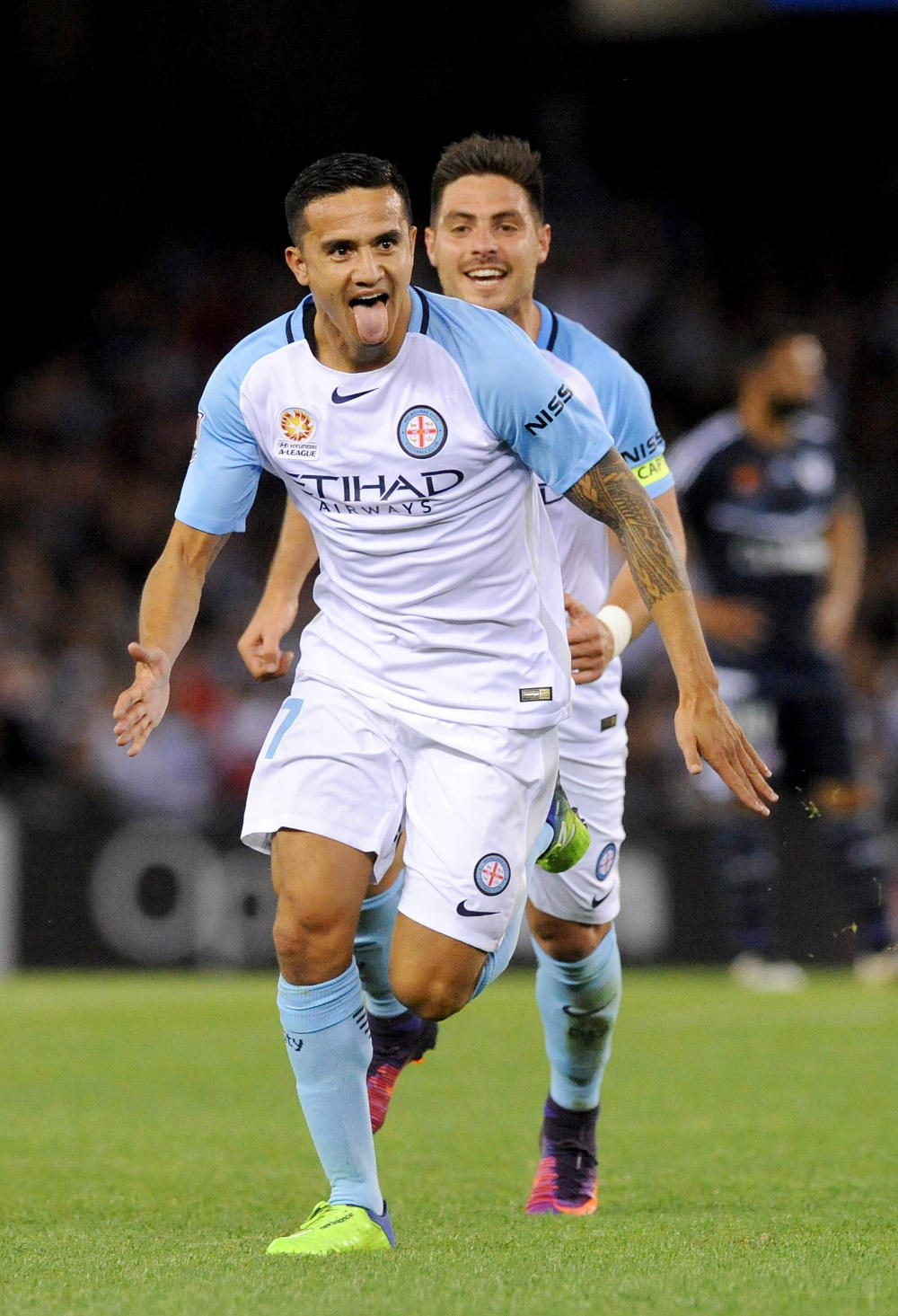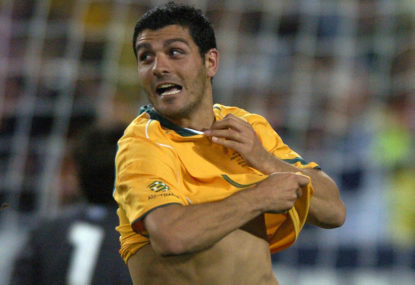Much criticism is levelled at writers who are deemed to focus on negatives in a search for controversy, clicks and notoriety. While there is always space for criticism in all walks of life, it is easier to criticise than celebrate.
The Australian Olympic Team’s performance in Rio and the current plight of our male cricket team are both examples of excessive and at times, unfair, criticism that brew hysteria in the public domain.
This piece is not of the same ilk. I want to celebrate something. I want to convey the feeling of the hair standing on the back of my neck around Sydney Derby time.
I want people to share the joy of football being covered extensively on Foxtel, with all games live, panel-based discussions and magazine style shows conveying the broad stories and issues surrounding the game in this country.
I want everyone to realise that what we have done is amazing. Derbies, overseas players, marquee signings, growth in crowd figures, club membership and television interest are indicative of the new frontier into which we have now ventured.
The reason I become emotional when I write about football is two-fold. Firstly, the drama of the game demands passion and secondly, football was, sadly, a dirty word for much of my life. Like an unspoken truth or a dark family secret.
Something that was always there but just far too difficult to understand, something that was, therefore, ignored.
I grew up in the inner-western suburbs of Sydney. Punchbowl to be exact. A working class area, occupied by children of inner city families who headed west looking for the Australian dream of a quarter-acre block.
The 1970s saw considerable migration and my school yearbook reflects a multicultural melting pot. From a standard class of thirty the mix looked something like this – ten or so Anglos, three or four Asians, five to six Lebanese or Middle Eastern boys and a hodge podge for the other third including Italians, Greeks, Brazilians, Filipinos and Yugoslavs.
Rugby League was the only sport and boys of all cultures played with vigour. The idea of a school football team was as hideous as Donald Trump at a Mexican fundraiser.
While the boys adjusted to cultural difference, and trust me, there were fights, the success of the local league team, the Canterbury-Bankstown Bulldogs, provided the backdrop to the area. We all delighted in their success.
Memories of shopping centres adorned in blue and white streamers and loaves of bread bearing the same colours are still vivid, and the ‘Dogs reeled off four premierships in nine years to entrench the status quo.
Yet something gnawed away at me relentlessly. The gnawing had begun late one night watching the hour of English football highlights on the ABC shown weekly.
Not knowing who to support, I was drawn to West Ham United due to a defender sharing my surname (silly reason to go for a club really, but give me a break, I was seven).
There was something about the game that intrigued me. The patience required, the euphoria and eruption around goals and the damp, cold and often snowy conditions in a far-away land from which my relatives had come, all drew me in.
Living opposite Salmon Reserve meant copious amounts of time spent playing with local kids. Touch football was frequently played, yet a group of older boys from a few streets away fascinated me.
Greeks mostly, with a few Italians and Lebanese thrown in, the boys played football for hours on weekends and I sat on my front step about eighty metres away, never invited due to my age and perceived lack of ability.
They played like champions, or so I thought, and their knowledge of the game was impressive. They shouted terms like Olympic and Marconi and knew names like Marshall Soper, John Kosmina and Peter Raskopoulos.
I frantically tried to learn the language and in a more digital age would have had far more success. But I struggled and the game remained something of a mystery to me, as it would through most of my youth.

With the clubs in the NSL divided along ethnic and cultural lines, I found it difficult to access the game. My parents deemed the matches too dangerous to attend (an undoubted example of over-protectiveness) and media coverage was essentially non-existent.
I would have loved to have collected footy cards with images of the local stars (I still have all my league cards and they are worth a motza they say) at least then I would have felt more connected to this mysterious game that these quick-talking, fast-footed youngsters were schooling me in each weekend.
As time passed, I continued to follow West Ham’s ladder fortunes in the newspaper, praying for wins to escape the dreaded drop, something I still do to this very day. I wonder how many others yearned for a local league that could engender the same loyalty and passion.
Broadcasters started to televise Australian Football. The early coverage is all a bit of a haze, yet bizarrely, Heidelberg ‘keeper Jeff Olver was my favourite.
In a shock move my school began to field a football team.
Being picked in the first eleven for both of my senior years was something of a fluke, a shock and a miracle. A couple of lucky passes in a trial and the always attacking position of right back was mine. We had immense talent up front, down back we had me.
The local league continued to evolve and tried everything to gain a footing in a tough market. A switch to summer football in 1989, the introduction of Northern and Southern Conferences in 1984 and both, first past the post and finals series formats, featured in the twenty-seven year history of the league.
Forty two clubs in total participated in the league; some capitulated in a heap, others stayed above water, yet throughout that period the chances of engaging with new demographics and luring new people the game were very, very slim.
My football journey was enhanced through this period by the famous clashes with Scotland in ’85, Charlie Yankos’ wonderful strike against Argentina in ‘88 and the highs and lows of clashes with Iran, Uruguay and Argentina.
Whether they were friendlies or qualifiers we rode our fortunes, squirmed in our seats, felt tragedy, ecstacy and desperation. World Cup qualification eluded Australia, campaign after campaign. I was two in ’74 when the Socceroos had last graced the stage. Therein a paradox developed; feeling more and more connected to the Socceroos, yet still strangely distant from the NSL.
Those of us who remember those struggles of the 80s and 90s need to be forgiven for the insane celebrations after John Aloisi’s penalty in 2005. The next generation will always struggle to fully comprehend what it felt like on that night.
Our overseas players continued to prove themselves on the world stage – Craig Johnston, Ned Zelic, Mark Bosnich, Harry Kewell and Mark Viduka became more than bit players at their respective clubs and West Ham built a wonderful connection with Australia through Robbie Slater and Stan Lazaridis.
Sydney Croatia became my team of choice thanks to an interest in Graham Arnold and Slater. Despite the increased sense of connectedness, they were never really ‘my’ team.
The difficult and necessary decision was made to re-badged the competition as the A-League. It would involve regional teams with state boundaries as the basis for tribalism rather than the cultural parameters that proceeded them.
Frank Lowy had been advocating the change way back in the days of Sydney Hakoah and was pivotal in driving the new league after the findings of the Crawford report.
The early struggles were enormous, marquee signings like Dwight Yorke and Robbie Fowler were never going to be enough, and at times, things looked grim. Yet here we stand, twelve years later, with a league of which to be proud.
What we now have as a footballing nation is astonishing. The speed at which it has occurred, increased community support and excellent media exposure are all evidence of the wide spread passion and support for football that was somewhat dormant in the mainstream.
The rise of the W-League is potentially the most tangible sign that football has finally embraced the broader community in the right way
It took us a little time to get our rivalries in order, but once we found the right formula, the game opened its arms to everyone.
Whether it be women, refugees, people with a disbility, lovers of more traditional Australian endeavours such as cricket, league and union or a seven-year-old kid in the inner-west fascinated by the beautiful game, football is now for everyone.






























































































